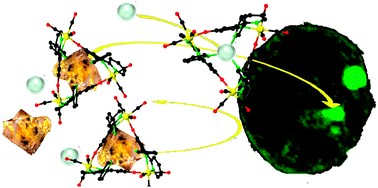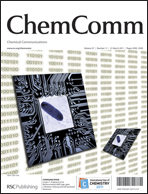A ‘Sleeping Trojan Horse’ which transports metal ions into cells, localises in nucleoli, and has potential for bimodal fluorescence/PET imaging†
Abstract
A rhenium polypyridine-based molecular vessel is membrane impermeant when empty, but, upon loading with metal ions, the cationic form is taken up by MCF-7 cells, localising in nucleoli. The luminescence of the vessel and its copper binding ability suggest potential as a bimodal fluorescence/PET imaging agent.


 Please wait while we load your content...
Please wait while we load your content...